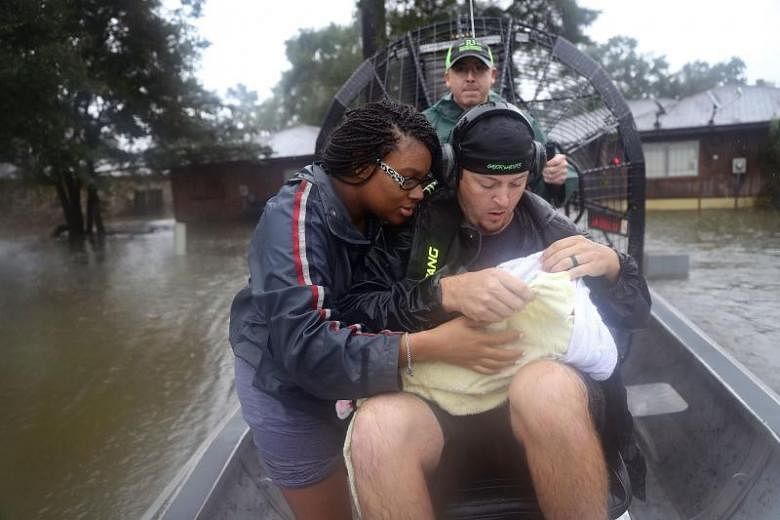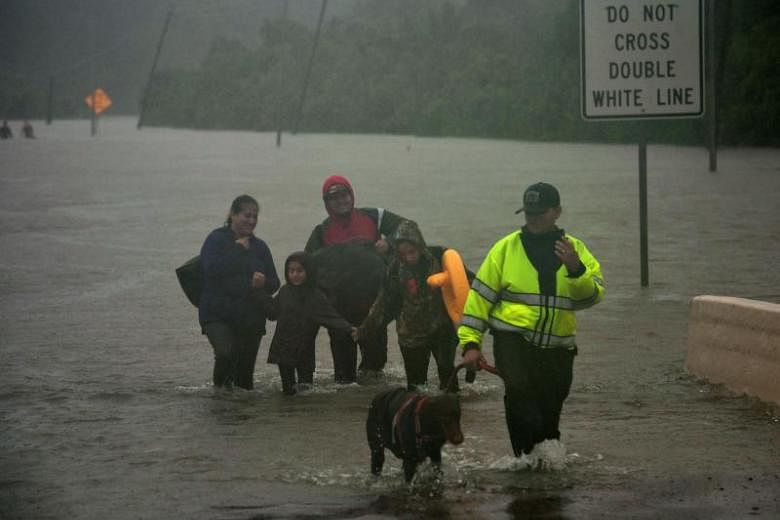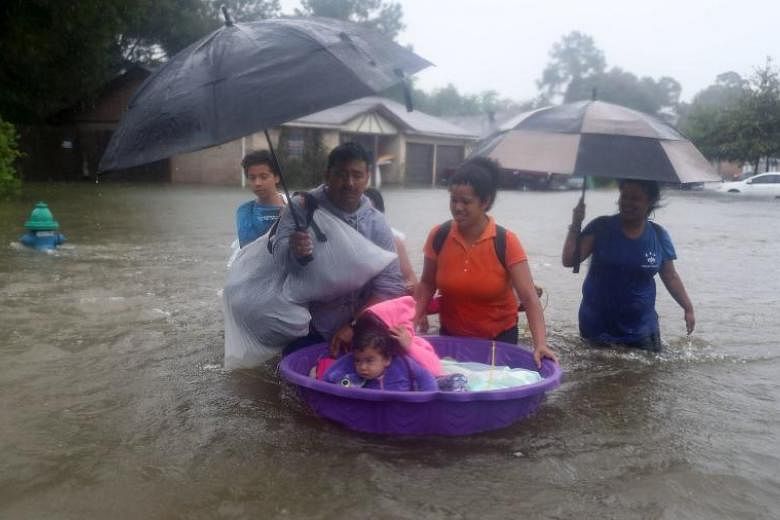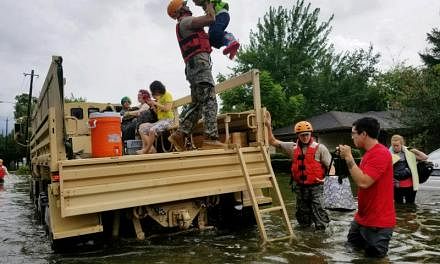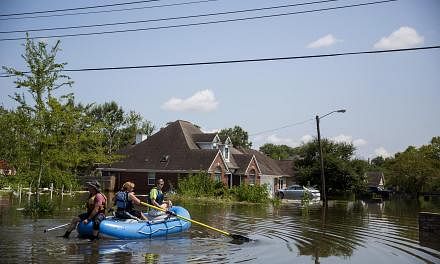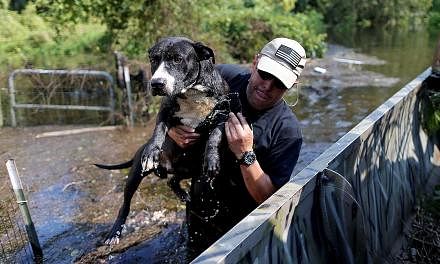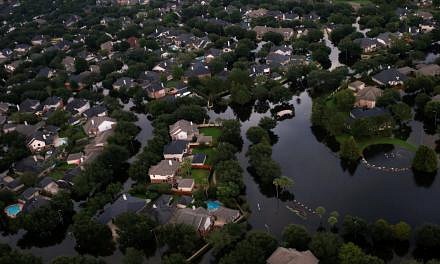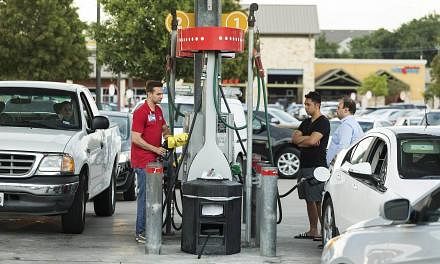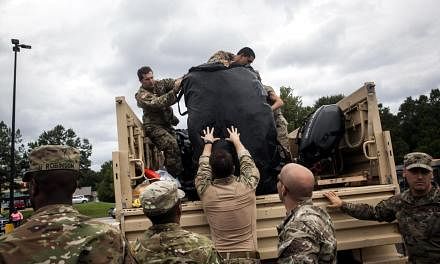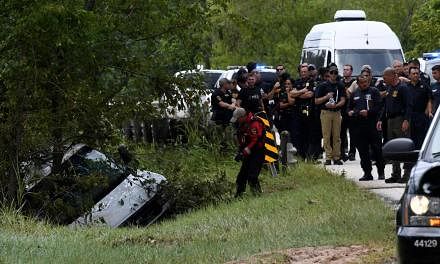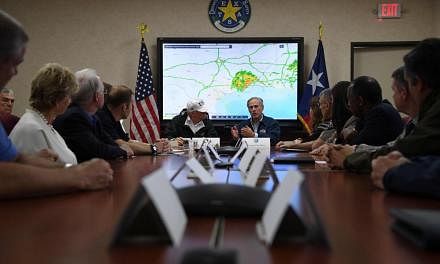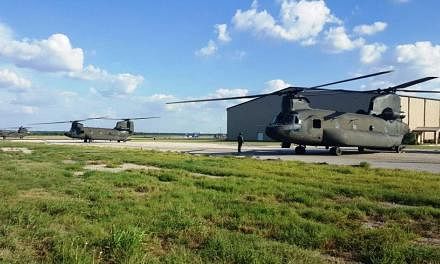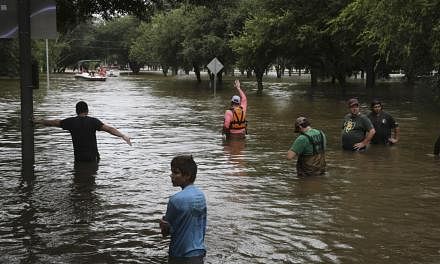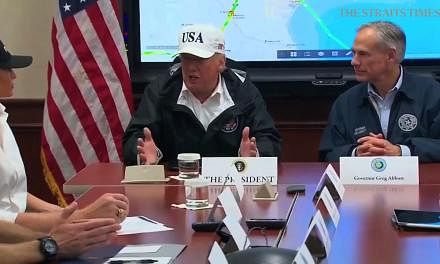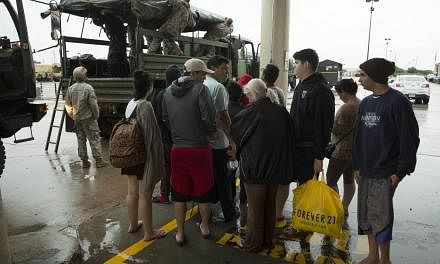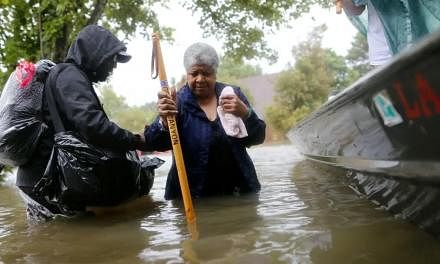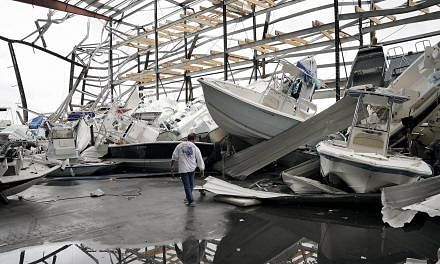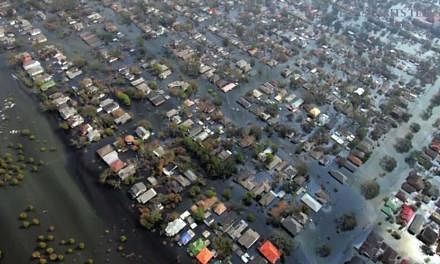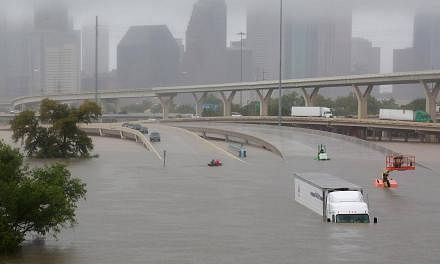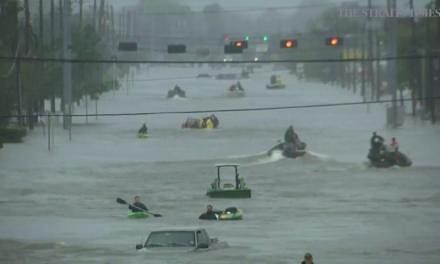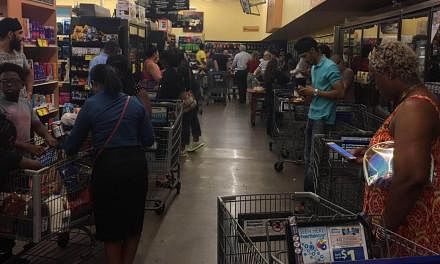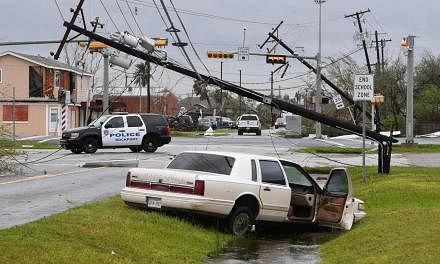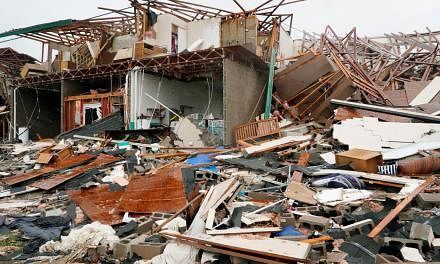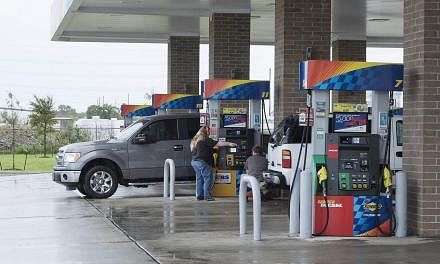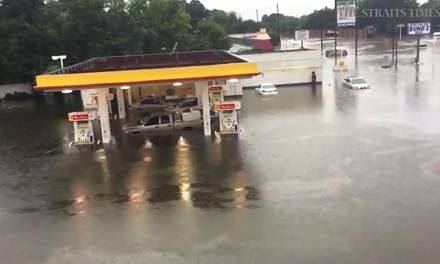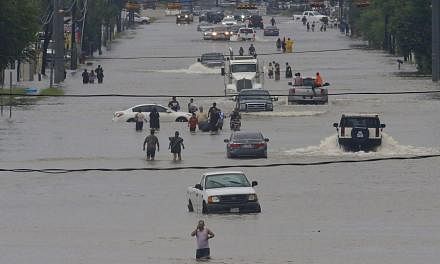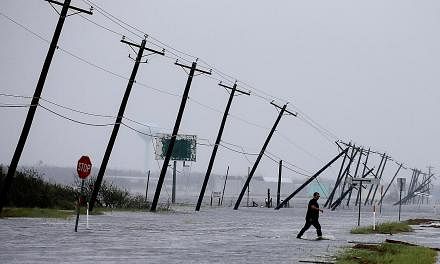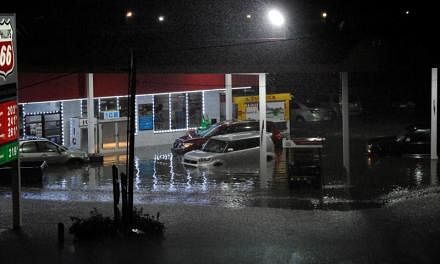The historic flooding that Tropical Storm Harvey unleashed on Houston will likely worsen as federal engineers release water from overflowing reservoirs to keep it from jumping dams and surging uncontrollably into the homes they protect, officials said on Monday (Aug 28).
Some 30,000 residents of the nation's fourth-largest city were expected to be left temporarily homeless by Harvey, which became the most powerful hurricane to strike Texas in more than 50 years when it came ashore on Friday near Corpus Christi, about 354 km south of Houston.
Stunned families surveyed the wreckage of destroyed homes along the nearby coast and roads that were not flooded were clogged with debris. Death estimates vary, but at least two people have been confirmed killed by the storm.
Harvey was expected to remain over the state's Gulf Coast for the next few days, dropping a year's worth of rain in about a week, with threats of flooding extending into neighbouring Louisiana.
In scenes evoking the aftermath of Hurricane Katrina in New Orleans in 2005, police and Coast Guard teams have rescued at least 2,000 people so far, plucking many from rooftops by helicopter, as they urged the hundreds believed to be marooned in flooded houses to hang towels or sheets outside to alert rescuers.
Thousands of members of the National Guard, as well as state and local police were rushing in helicopters, boats and trucks to rescue people before waters rise again, with another 38 to 64 cm of rain expected in the coming days.
"The goal is rescue. That's the major focus for today," Houston Mayor Sylvester Turner told reporters.
Harvey's centre was 148 km south-southwest of Houston on Monday afternoon and forecast to arc slowly toward the city through Wednesday, with the worst floods expected later that day and on Thursday.
Schools and office buildings were closed throughout in the metropolitan area, home to 6.8 million people, on Monday as chest-high water filled some neighbourhoods in the low-lying city.
Numerous refiners shut operations, likely for weeks, in the nation's refining and petrochemical hub.
The US Army Corps of Engineers said Monday that it was releasing water from the nearby Addicks and Barker reservoirs into Buffalo Bayou, the primary body of water running through Houston. Officials warned that would lead to more flooding.
"The more they release it could go up and it could create even additional problems," Turner warned. The release was necessary to prevent an uncontrolled surge of water, which Turner said "would be exponentially worse." Torrential rain also hit areas more than 240 km away, swelling rivers upstream and causing a surge that was heading toward the Houston area, where numerous rivers and streams already have been breached.
Dave Holom, 44, manager of Big Tex Tree Nurseries, was one of many civilians who joined in the rescue effort on Monday. "We can fit a lot of people in the back of this truck and it is tall enough off the ground to get safely through high water,"Holom said as he prepared to drive his 24-foot (7.3 m) long vehicle into a flooded neighbourhood.
About 5,500 people were in shelters as of Monday morning, city officials said, with FEMA Administrator Brock Long forecasting that as more than 30,000 people would eventually are expected to be placed temporarily in shelters.
Many area residents were left in limbo, wondering what remained of their flooded homes.
Regina Costilla, 48, said she and her 16-year-old son had been rescued from their home by a good Samaritan with a boat. She sat and worried until she was reunited with her husband and large dog, who had been left behind because they didn't fit into the boat. "I'm not complaining, we're alive," said Costilla. "When I saw the forecast of the storm I said I'll be happy if we get out with our lives" Houston did not order an evacuation due to concerns about people being stranded on city highways now consumed by floods, Turner said.
FEMA's Long on Monday did not question the decision, saying the "evacuation of the city of Houston could take days, days, literally days." Texas Governor Greg Abbott, who had suggested on Friday that people leave the area, on Monday told CBS This Morning that"the time for making that determination has passed, and (there's) no need to for us to relitigate that issue right now."
US President Donald Trump plans to go to Texas on Tuesday to survey the damage, a White House spokeswoman said on Sunday. On Monday he approved an emergency declaration for Louisiana.
Trump, facing the biggest US natural disaster since he took office in January, signed a disaster proclamation for Texas on Friday, triggering federal relief efforts.
Almost half of the US refining capacity is in the Gulf region. Shutdowns extended across the coast, including Exxon Mobil's facility in Baytown, the nation's second largest refinery. About 13 percent of daily U.S. capacity was offline as of Monday morning.
The outages will limit the availability of US gasoline and other refined products and push prices higher, analysts said. Gasoline futures rose as much as 7 percent on Monday.
Damages are not likely to be as extensive as Katrina, which killed 1,800 people in and around New Orleans, or Sandy, which hit New York in 2012, said a spokeswoman for Hannover Re, one of the world's largest reinsurers. Those caused US$80 billion ($108 billion) and US$36 billion in insured losses, respectively.
